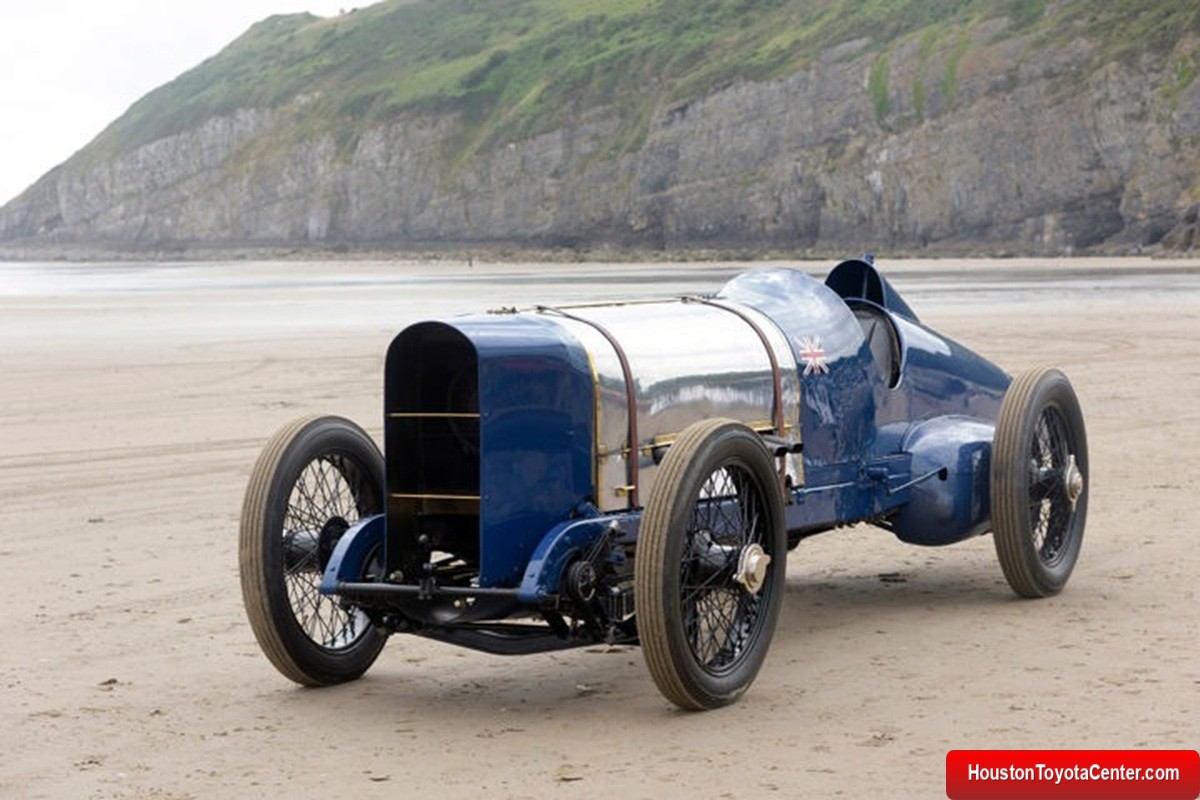Pendine Sands, Wales – Nearly a century after setting a milestone in the world of motorsports, the legendary Blue Bird car is making an emotional and symbolic return to the Welsh beach where it etched its name into history. In 1925, the Blue Bird became the first automobile to break the 150 mph (240 km/h) barrier on land. Now, this icon of speed is headed back to Pendine Sands to celebrate one of the most important moments in the evolution of automotive performance.
🔹 The Historic Feat That Shook the World
On July 21, 1925, British racing pioneer Malcolm Campbell took the wheel of the Blue Bird, a machine powered by a massive 18-liter Manitou V12 aircraft engine producing 350 horsepower. Roaring across the flat sands of Pendine at a staggering 150.76 mph (242.628 km/h), Campbell set a land speed record that shocked the world and ignited a global obsession with speed.
This achievement wasn’t just a number—it was a symbol of human ingenuity, courage, and the relentless pursuit of progress. In a time when the average car could barely manage 50 mph, Campbell’s daring dash captured the imagination of millions.
🔹 The Blue Bird Returns Home
Now, in 2025, just shy of the record’s 100th anniversary, the Blue Bird is returning to Pendine Sands in a heartfelt tribute. The original vehicle, carefully restored and preserved at the National Motor Museum in Beaulieu, will be brought back to the very same beach for a ceremonial event that includes members of Campbell’s family.
FREE: Quickly identify and understand problems with your vehicle 🚘
CLICK HEREDon Wales, Malcolm Campbell’s grandson, will attend the tribute and witness engineers start the iconic engine once more. Though the car won’t race across the sands again, it will be photographed on the beach and displayed proudly outside the Land Speed Museum, near the site of the original record run.
🔹 A Legacy That Transcends Generations
“This was the moment that started the craze,” said Don Wales. “After that, everyone wanted to know who held the land speed record.” And indeed, it was only the beginning for the Campbell legacy—Malcolm would go on to be the first man to surpass 300 mph, reaching that mark in 1935 in the Bonneville Salt Flats in the U.S.
But it all began on a quiet stretch of Welsh beach, where the roar of the Blue Bird’s engine echoed a new chapter for motorsports.
Since Campbell’s days, land speed records have soared. In 1997, RAF pilot Andy Green shattered records with a mind-boggling 778 mph (1,227.785 km/h) run in the Thrust SSC, breaking the sound barrier on land. Yet, while high-tech vehicles like the Bloodhound LSR and Aussie Invader 5R aim to go beyond 1,600 km/h, Campbell’s achievement remains a turning point—a genesis moment for speed itself.
🔧 A Resurrection Decades in the Making
The Blue Bird’s journey back to Pendine wasn’t easy. After its record-setting run, the car was forgotten in a barn for decades. When it was recovered and returned to the National Motor Museum, the engine was found seized and badly damaged. A failed start in 1993 revealed significant issues with pistons, rods, and crankshaft components.
Chief Engineer Ian Stanfield described the ten-year restoration effort as a monumental challenge. With the original Sunbeam factory destroyed during World War II, many parts had to be custom-made or sourced from other vintage collections.
“Restoring the Blue Bird was like building a puzzle with missing pieces,” said Stanfield. “But it had to be done—the car is a piece of history.”
🚀 More Than a Machine
Today, the Blue Bird is more than just metal and machinery. It’s a living artifact of an era where dreams of speed and flight consumed the public imagination. As Pendine Sands welcomes the Blue Bird once more, it’s not just a photo op—it’s a moment to reflect on how far we’ve come, and the restless drive to go even further.
Even in the age of Formula 1, electric hypercars, and Mars rovers, the sound of that 1925 V12 engine starting up again will resonate with anyone who dreams of breaking limits.
📸 The Event at a Glance:
| Date | Event | Location |
|---|---|---|
| July 2025 | Commemorative Return of the Blue Bird | Pendine Sands, Wales |
| Attendees | Don Wales (grandson of Malcolm Campbell), Engineers from National Motor Museum | |
| Highlights | Engine start-up, static photo on the beach, exhibit outside the Land Speed Museum |
The Return of the Blue Bird is not just a nod to a past achievement. It is a celebration of ambition, resilience, and the unshakable human desire to go faster, higher, and further.
The legacy of Pendine Sands lives on—and so does the legend of the Blue Bird.


Leave a Reply